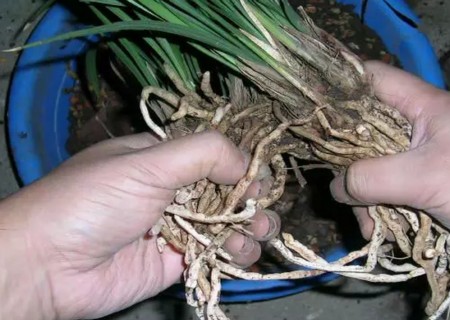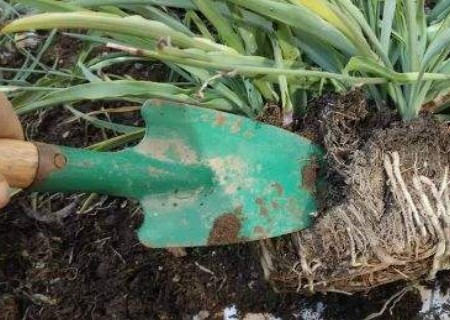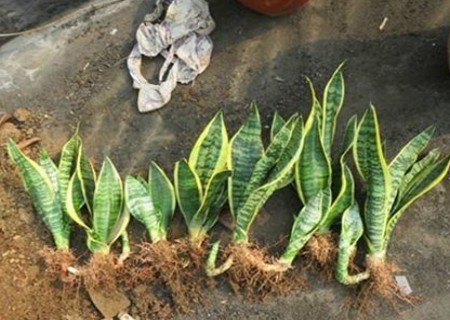Diagram of ramet process of potted Magnolia
At an appropriate time, the axillary buds at the junction between the pseudobulbs and roots of Cymbidium are cut off from the mother and cultured in vitro, which is called ramet propagation of Cymbidium. The adaptability and regeneration ability of Cymbidium are very strong. A pot of adult Cymbidium can often send out several or even a dozen axillary buds a year. These buds, whether they take root or not, can be cut from the mother and cultured in vitro to develop into new plants.
The ramet propagation of Cymbidium has the advantages of simple operation, high survival rate and rapid growth and development. In the process of ramet, we should pay attention to the following technical points.

1. The timing of ramets of Cymbidium:
The best time for ①: the best time for ramets of Cymbidium varies from place to place. If greenhouse equipment is available, it can be carried out all the year round; in the Yangtze River basin and its southern areas, ramets can be carried out before and after Ching Ming Festival in the first half of the year. In the second half of the year, the ramet must be carried out between White Dew and the Autumn Equinox, and the autumn ramet should be as early as possible, so that the new plant cut off from the mother has a longer growth period.
The best leaf age of ②: is it better to ramet in spring or autumn? This depends on the size of the offspring. In general, when the daughter plant grows 3 to 5 leaves, it is very beneficial to the growth of the daughter plant and the mother plant. In other words, what should be reversed in the first half of the year cannot be put off until the second half of the year, still less can it be put off until the next year.
2. Prepare the orchid before dividing the plant:
① flowerpots: family potted plants should be selected in advance, preferably earthen pots. Do not care too much about the beauty of the flowerpot and ignore its practicality, choose the tile pot with better air permeability at the bottom. As for porcelain, ceramic, do not consider, poor air permeability, is not conducive to the development of plants.
② soil: when the soil is ready, disinfect it. Humus soil can be sprayed with potassium permanganate aqueous solution; fine river sand can be disinfected directly into boiling water to prevent seedlings from being infected and rotted by bacteria.
③ prepare charcoal powder: charcoal powder can effectively prevent moisture, ramets are bound to leave wounds, apply charcoal powder to the wound, can absorb moisture to prevent decay.
④ sharp knife: the knife used to cut the plant must be sharp to reduce the wound on the plant. Before use, quickly dry grind the knife on the grindstone to make the knife body hot and can effectively sterilize.
3. The steps of ramets of Cymbidium:
① first, take out the mother plant of Cymbidium from the basin, remove the soil from the root, and carefully observe the root system. Cymbidium is a fleshy root, one root feeds a leaf.
② can be cut off directly by hand if the daughter plant grows on the outer edge of the mother plant and the plant is small, and if the daughter plant is strong, it can be cut off with a sharp knife. Don't break it by force, so as not to damage the young plants.
③ applies charcoal powder to the wound, and soot is fine.
④ put the separated magnolia to dry for a while, dry the wound and then pot it.
The planting depth of ⑤ in the pot is not easy to be too deep, so it is appropriate to take the base of the newly buried seed plant and cover it with a little sterilized fine sand. After planting, it was immediately watered, and after 2 weeks, the wound in the root system healed, and then covered with a layer of culture soil. After 1 ~ 2 months, the seed plant can produce new roots.
Time: 2019-06-10 Click:
- Prev

How to split potted Cymbidium
The potted flowers that can be propagated are mainly perennial evergreen flowers, some of which rely on horizontal underground stems to expand the clumps. When dividing the plant, first remove the mother plant from the flowerpot, shake off the outer soil, and use a knife or pruning shears to disconnect the underground stems connected between the leaves.
- Next

The method and matters needing attention of Phellodendron paniculata
Tiger skin orchid is a kind of foliage plant with strong vitality, which is lax on the environment and easy to raise, and its biggest characteristic is that it can purify the air and has a strong ability to absorb formaldehyde. Putting several pots of tiger skin orchid in the newly renovated home can absorb indoor harmful gases. Flower friends who have raised tiger skin orchid all know that.
Related
- Fuxing push coffee new agricultural production and marketing class: lack of small-scale processing plants
- Jujube rice field leisure farm deep ploughing Yilan for five years to create a space for organic food and play
- Nongyu Farm-A trial of organic papaya for brave women with advanced technology
- Four points for attention in the prevention and control of diseases and insect pests of edible fungi
- How to add nutrient solution to Edible Fungi
- Is there any good way to control edible fungus mites?
- Open Inoculation Technology of Edible Fungi
- Is there any clever way to use fertilizer for edible fungus in winter?
- What agents are used to kill the pathogens of edible fungi in the mushroom shed?
- Rapid drying of Edible Fungi

